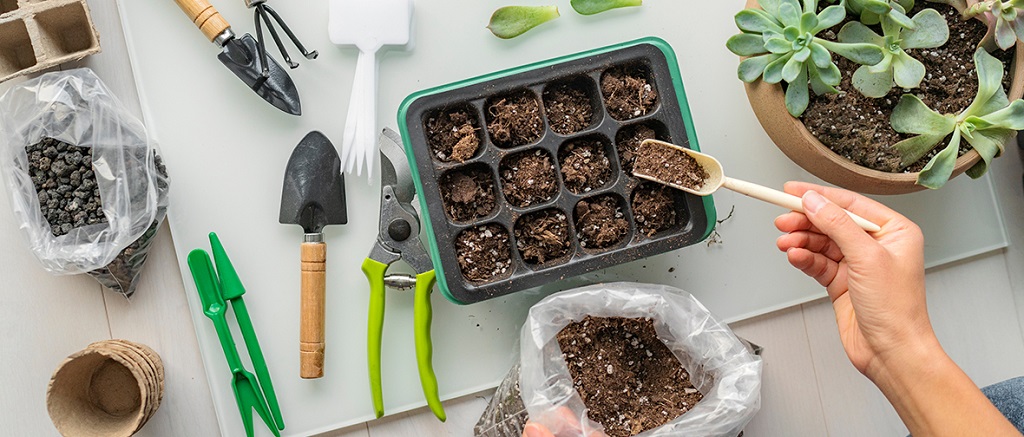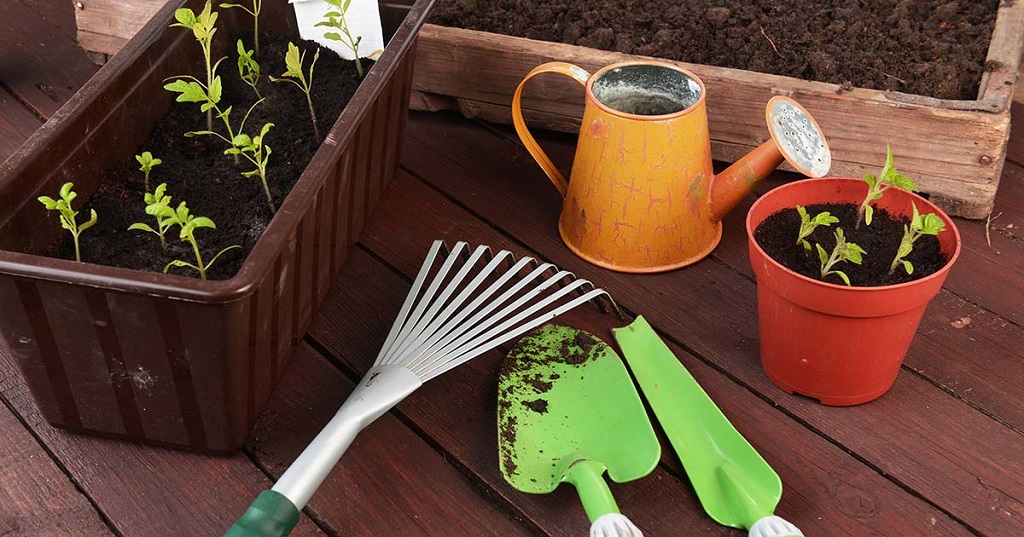
12 Aug What Do You Put in a Garden Kit? A Guide to Essential Supplies
If you’re a gardening enthusiast or a newbie looking to start your own green haven, having a well-equipped garden kit is essential. Just like a chef needs the right ingredients to whip up a delicious meal, a gardener needs the right tools and supplies to cultivate a thriving garden. In this article, we’ll delve into the world of garden kits and explore the key elements you should include in yours. Whether you have a spacious backyard or a cozy balcony, these essentials will help you nurture your plants and bring your garden dreams to life. The article is authored by Pudingarden.com.
Quality Soil: The Foundation of Your Garden
Much like a house needs a strong foundation, your garden needs nutrient-rich, well-draining soil. Choose a high-quality potting mix or prepare your own by blending compost, vermiculite, and peat moss. Good soil ensures healthy root growth and vibrant plants.
Variety of Seeds: Planting the Promise of Growth
When putting together a gardening kit, it’s important to make sure you have a variety of seeds on hand. Your gardening kit should include an assortment of seeds ranging from vegetables and herbs to flowers. These seeds hold the potential for a bountiful garden, allowing you to choose your favorite plants and experiment with new varieties. By having a well-stocked gardening kit, you’ll be prepared for whatever the growing season throws your way.
Sturdy Planters: Homes for Your Green Allies
Depending on the space available, opt for planters that accommodate your chosen plants. Whether it’s ceramic pots, hanging baskets, or raised beds, the right planters provide adequate space for growth and add aesthetic appeal to your garden.
Watering Can or Hose: Quenching the Thirst
Plants need water to thrive, so a watering can or hose is indispensable. Ensure that your garden kit includes a means of providing your plants with a consistent and controlled water supply.
Hand Trowel and Pruners: Precision Tools for Care
A hand trowel is your go-to tool for planting and transplanting. Pruners, on the other hand, help you trim and shape your plants, promoting healthy growth. These tools allow you to give your garden the attention it deserves.
Gloves: Shielding Your Hands
Gardening can get messy, so a pair of durable gloves is a must. They protect your hands from dirt, thorns, and sharp edges while you work closely with your plants.
Mulch: Covering the Ground
Mulching your garden helps retain moisture, suppress weeds, and regulate soil temperature. Include organic mulch like straw, wood chips, or compost to keep your plants happy and healthy.
Fertilizers: Nourishment for Optimal Growth
Plants require nutrients to flourish, and a well-rounded fertilizer will provide them with the essential elements they need. Choose a balanced, slow-release fertilizer to ensure steady nourishment.
Sun Protection: Shielding from Harsh Rays
If your garden is exposed to direct sunlight, consider providing sun protection. Shade cloths or umbrellas can help prevent sunburn and stress on your plants during scorching days.
Labels and Markers: Keeping Track of Plantings
To avoid confusion, use labels or markers to identify different plants. This is especially helpful when you’re growing multiple varieties or experimenting with different cultivation methods.
Kneeling Pad: Comfort While Tending
Gardening often involves kneeling and bending. A cushioned kneeling pad provides comfort and support, reducing strain on your knees and back as you tend to your plants.
Pest Control Solutions: Safeguarding Your Garden
Insects and pests can pose a threat to your garden. Have organic pest control solutions like neem oil or insecticidal soap ready to protect your plants without harming beneficial insects.
Support Structures: Aiding Vertical Growth
For plants that climb or have trailing growth, such as tomatoes or beans, include trellises, stakes, or cages in your kit. These structures support vertical growth and prevent overcrowding.
Composting Tools: Recycling Plant Waste
Composting is an eco-friendly way to recycle plant waste and kitchen scraps. Add composting tools to your kit, such as a compost bin or worm composter, to create nutrient-rich compost for your garden.
Educational Resources: Growing Knowledge
Last but not least, include gardening guides or resources that provide insights into plant care, troubleshooting common issues, and maximizing your garden’s potential.
Conclusion
Crafting a personalized garden kit perfectly suited to your available space and unique preferences is a truly enjoyable endeavor. This thoughtfully curated kit will arm you with all the necessary tools to lovingly tend to your plants, fostering an environment where they can thrive and flourish. Whether you’re taking your first steps into the world of gardening or you’re a seasoned pro with a green thumb, a well-equipped garden kit serves as your steadfast companion throughout the journey of nurturing a vibrant and bountiful garden. And speaking of fruitful endeavors, don’t forget to consider the best time to plant a fruit tree as you plan your garden activities. This crucial detail will ensure that your garden thrives with both beauty and productivity.
FAQs
Can I use regular soil from my yard for my garden kit?
Using a high-quality potting mix is recommended to ensure your plants get the right nutrients and drainage.
How often should I water my garden?
The frequency of watering depends on factors like plant type, weather, and soil. Check the moisture level and adjust accordingly.
Are there alternatives to chemical fertilizers?
You can opt for organic fertilizers like compost, worm castings, and seaweed extracts for a natural approach to plant nutrition.
Do I need to wear gloves while gardening?
Wearing gloves is advisable to protect your hands, but it’s a personal choice. They also prevent the transfer of harmful substances to your skin.
What can I do to prevent pests in my garden?
Employ natural pest control methods such as introducing beneficial insects, practicing companion planting, and using organic pest repellents.


No Comments